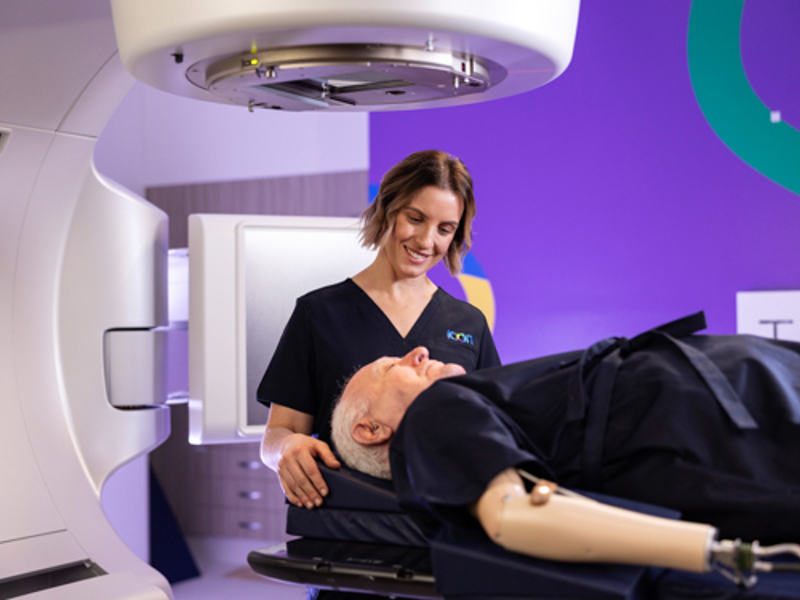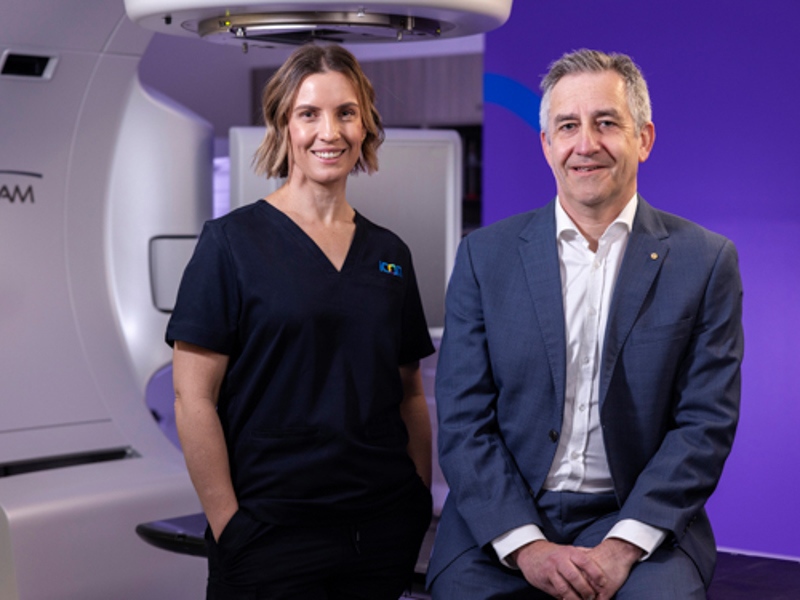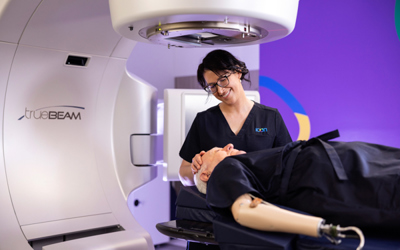What is volumetric modulated arc therapy?
Volumetric modulated arc therapy (VMAT) is a specific type of external beam radiotherapy technique that allows more difficult tumours, such as ones wrapped around or in close proximity to important structures, to be targeted precisely without harming the important structures. This is achieved through the use of state-of-the-art technology that can shape and modify the radiation beam as it is delivered to the patient.
To enhance the effectiveness and accuracy of VMAT treatments, they are often delivered using image guidance (or IGRT) and utilising motion management. IGRT is a process that involves imaging the patient prior to treatment and then aligning the patient precisely based on the position of their internal or external anatomy.
Motion management is typically used in conjunction with image guidance for tumours or disease that can move during treatment (due to patient breathing, for example). Most modern treatment machines are equipped with motion management technology.
How does VMAT work?
During treatment with VMAT, you lie down on a radiation therapy treatment couch in the treatment position that has been determined by your radiation therapist during radiotherapy treatment planning. The treatment equipment (also known as a linear accelerator) rotates around your body delivering focused beams of radiation to the tumour or disease.
As the machine rotates around your body, the shape and intensity of the radiation beams continuously change to fit closely to the shape of the area that is being treated. This reduces the overall amount of radiation to healthy cells surrounding the tumour or disease.
Your treatment team uses advanced imaging technology which helps the treatment staff visualise the treatment area during your treatment setup and deliver the radiation more precisely.

What are the benefits of VMAT?
Radiotherapy using VMAT delivers treatments quickly and with high precision and helps reduce the overall amount of radiation being delivered to surrounding healthy tissue. The rapid speed of delivery of the radiation beams makes the overall treatment time shorter than other standard treatment techniques.
Radiotherapy treatments can be delivered using VMAT in just a few minutes with a treatment session taking as little as 10 minutes from start to finish. This can be more convenient and comfortable for patients who may feel discomfort or pain when lying down for long periods.
What types of cancer is VMAT used to treat?
VMAT can be used to treat large areas of the body with uneven boundaries and tumours located close to vital organs without fear of damage to these organs by high doses of radiation.
Many different cancers can be treated using VMAT including skin cancers, head and neck cancers, brain cancers, gastrointestinal cancers, prostate cancers and lung cancers.
Ready to discuss your care?
We’re here to support you through your treatment. Get in touch with us for more information about our centre and the services we offer.




